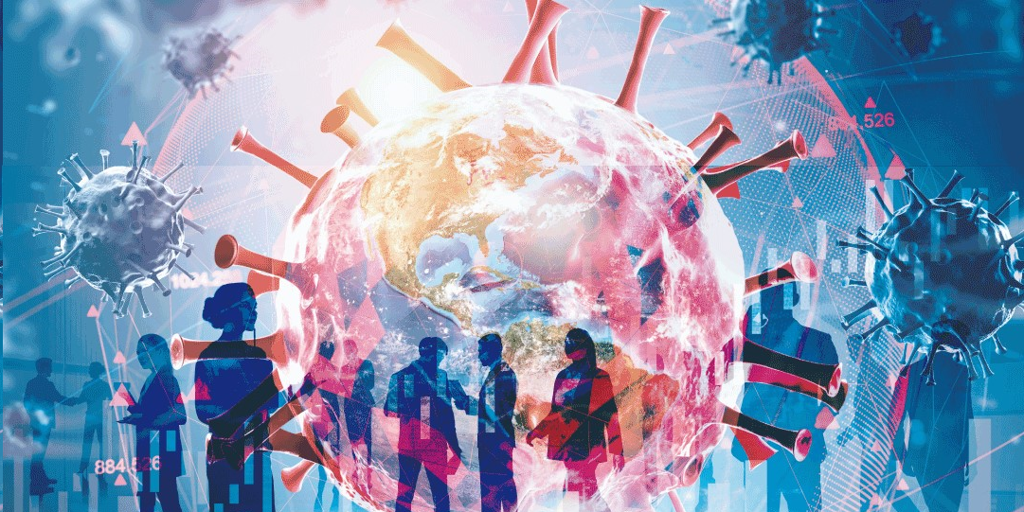A research team from Japan’s Nagoya University has revealed that human behavior, such as restrictions and quarantine measures, can influence the evolution of new strains of SARS-CoV-2, the virus that causes Covid-19.
Coronavirus becomes more transmissible earlier in its life cycle.
The findings, published in Nature Communications, provide new insights into the relationship between people’s behavior and disease-causing factors.
Like any other organism, viruses evolve over time. Those with a survival advantage will dominate. Many environmental factors influence this evolution, including human behavior.
By isolating sick people and using lockdowns to control outbreaks, humans can alter the evolution of viruses in different ways. Predicting how these changes occur is critical to developing adaptive treatments and interventions.
An important concept in this interaction is viral loadwhich refers to the amount or concentration of virus present per milliliter of body fluid.
In the case of SARS-CoV-2, higher viral loads in respiratory secretions increase the risk of droplet transmission. Viral load is related to the likelihood of spreading the virus to other people.
For example, viruses like Ebola have extremely high viral loads, while the common cold has lower viral loads. However, the virus must engage in a careful balancing act, as increasing the maximum viral load may be beneficial, but too much viral load may make a person too sick to spread the virus to others.
The research team, led by Professor Shingo Iwami, identified trends using mathematical models with an artificial intelligence component to investigate previously published clinical data.
As a result, they found that the most successfully spreading SARS-CoV-2 variants had earlier and higher viral load peaks.However, as the virus evolves from variants From pre-Alpha version to Delta versionthe infection time is shorter.
The researchers also found that as the virus mutates, the shortening of the incubation period and the increase in the proportion of asymptomatic infections also affect the evolution of the virus.
The results showed a clear difference. As the virus evolved from the Wuhan strain to the Delta strain, they found that the peak viral load increased five-fold and the number of days before the viral load peaked increased 1.5-fold.
Iwami and colleagues believe that changes in human behavior toward viruses aimed at limiting transmission increase selective pressure on the virus. This results in SARS-CoV-2 being transmitted primarily during the asymptomatic and presymptomatic phases, which occur early in its infection cycle. As a result, viral load peaks are brought forward to this period, allowing for more efficient transmission in the earliest pre-symptomatic stages.
public health
Scientists say it is necessary to consider the impact of changes in human behavior on the evolutionary patterns of viruses when assessing public health strategies to deal with Covid-19 and any future pathogens that may cause pandemics.
«We expect that immune pressure from vaccines and/or past infection will drive the evolution of SARS-CoV-2 -Iwami pointed out-. “However, our study finds that human behavior can also contribute to viral evolution in more complex ways, suggesting the need to reassess viral evolution.”
Their research suggests that the evolution of new coronavirus strains may arise due to complex interactions between clinical symptoms and human behavior.

